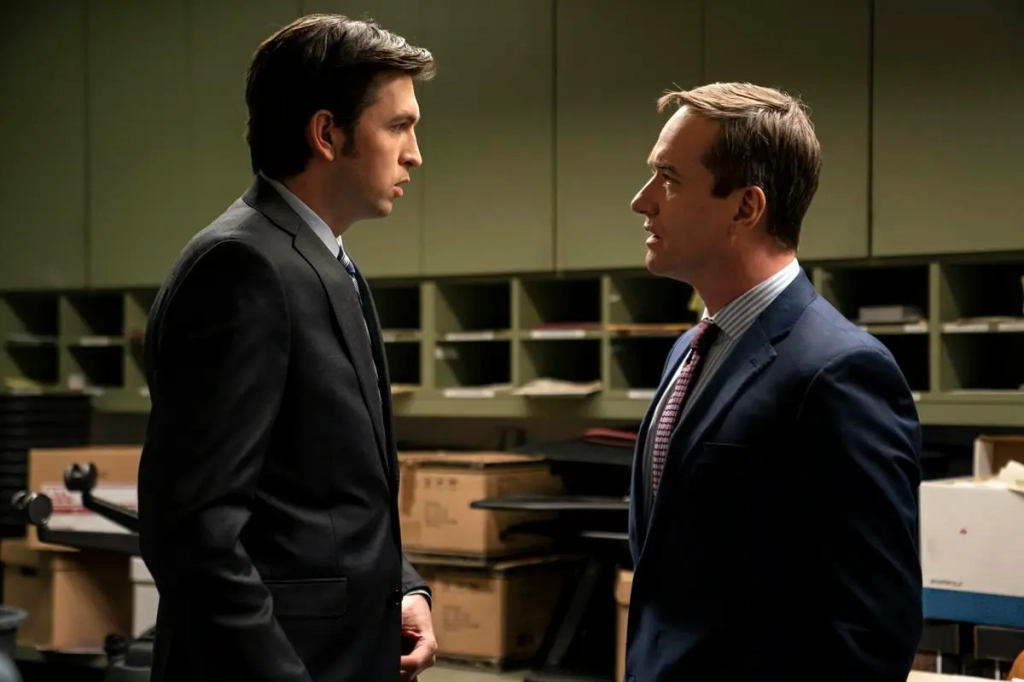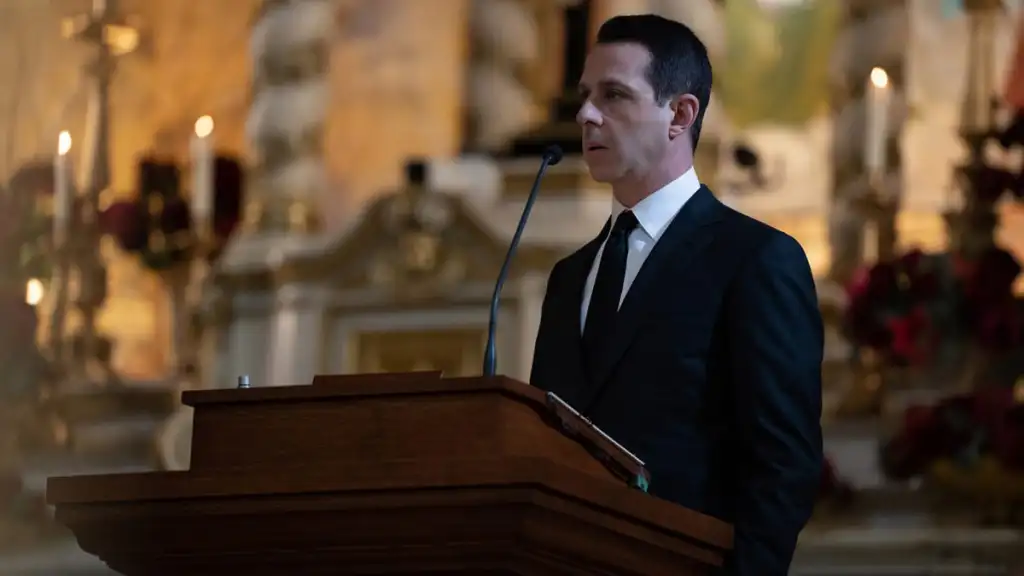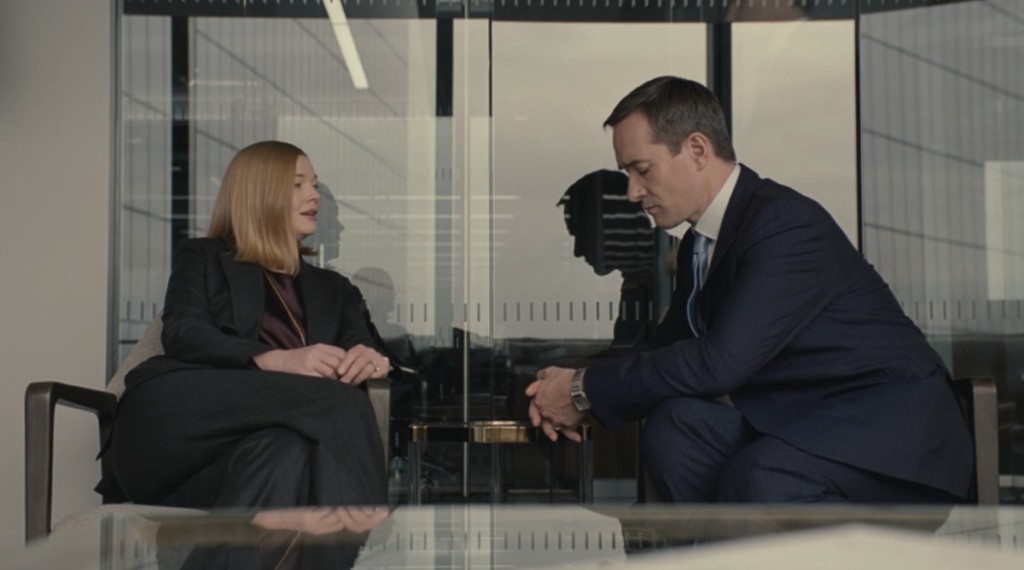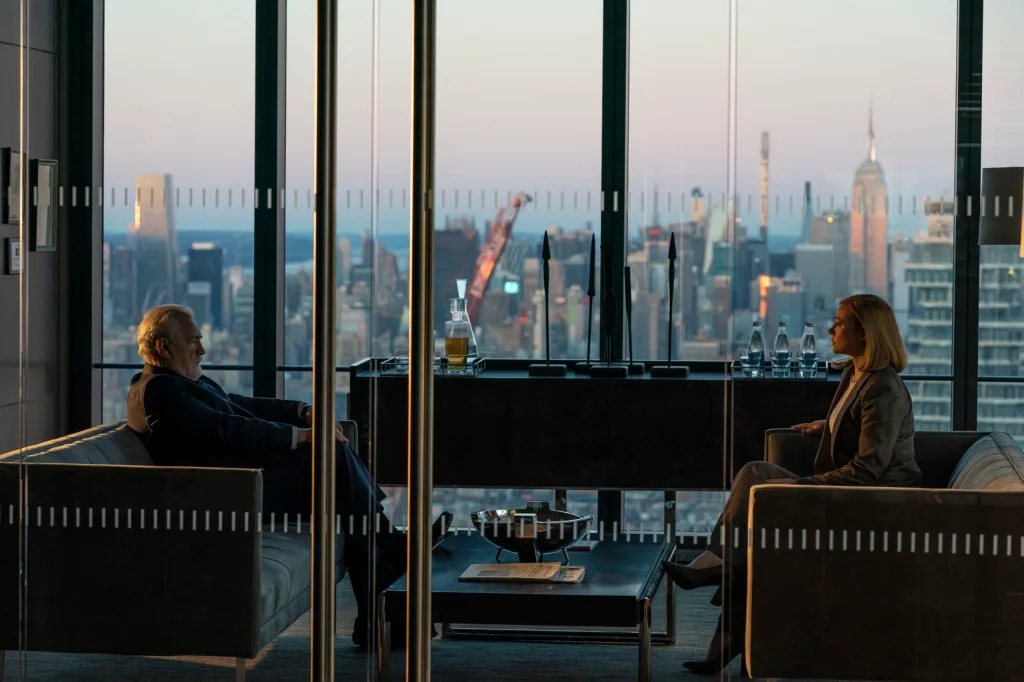
“Succession” stands out not only for its compelling storytelling and sharp dialogue but also for its masterful cinematography, a visual language that enhances the narrative’s complexity and satirical undertones. The show’s use of cinematographic techniques, including snap zooms reminiscent of kung fu films and handheld shots during Roy family dialogues, serves as a nuanced commentary on corporate culture and familial dysfunction.
Snap Zooms as Satirical Commentary:
One of the standout features of “Succession’s” cinematography is its strategic use of snap zooms, a technique reminiscent of kung fu films. These rapid zooms, often seen during intense moments or power plays, provide a cinematic flair that both captivates and satirizes. The connection to martial arts films is particularly intriguing, as it draws a parallel between the power dynamics within the Roy family and the stylized combat of warrior cultures.

In kung fu films, snap zooms are utilized to emphasize a character’s skill, power, or the impact of their actions. In “Succession,” these zooms serve a dual purpose. On one hand, they underscore the high-stakes nature of the corporate battles within Waystar Royco, highlighting the characters’ strategic maneuvers akin to martial arts prowess. On the other hand, the use of this technique becomes a satirical commentary on the self-perception of corporate culture as a form of warfare. The grandiosity of these zooms contrasts with the often banal and unethical decisions being made, exposing the grandiose self-image of the corporate elite.

Handheld Shots for Familial Unsettling:
The decision to shoot Roy family dialogues with handheld cameras adds a layer of palpable tension and unease to the scenes. The intentional instability of the handheld shots mirrors the emotional instability and dysfunction within the family. Unlike the polished and controlled visuals associated with corporate settings, the handheld shots disrupt the expected visual language, contributing to the show’s exploration of family dynamics and the façade of unity.
As characters engage in heated debates or reveal their vulnerabilities, the handheld camera work becomes a visual metaphor for the shaky foundations of the Roy family. It captures the disintegration of the carefully crafted image of unity, revealing the underlying conflicts and personal struggles. This unique approach to cinematography aligns with the narrative’s exploration of familial dysfunction, making the audience feel the instability and unpredictability of the family dynamics.

Cinematography as Narrative Enhancer:
“Succession” transcends the boundaries of traditional television by using cinematography as an integral part of its storytelling. The deliberate choice of visual techniques contributes to the show’s satirical tone, offering a layered commentary on corporate power dynamics and familial relationships. The snap zooms and handheld shots serve as visual signatures, enriching the narrative by providing viewers with a deeper understanding of the characters and their complex interactions.
“Succession,” in its visual brilliance, employs extreme contrast choices in cinematography to symbolize the stark juxtapositions inherent in the show’s themes of power, family dynamics, and corporate nuance. This intentional play with light and shadow serves as a visual metaphor, heightening the narrative’s tension and emphasizing the moral complexities of the Roy family’s decision-making.

Corporate Skyscrapers and Dimly Lit Boardrooms:
One notable visual choice in “Succession” is the depiction of corporate environments. The exteriors often showcase imposing skyscrapers, bathed in the harsh light of success and opulence. These shots symbolize the towering influence of Waystar Royco and the wealth that emanates from its corporate empire. However, once inside the boardrooms, the contrast intensifies. The rooms are dimly lit, casting long shadows on characters’ faces. This deliberate choice emphasizes the secretive and morally ambiguous decisions made within the corporate realm. The extreme contrast between the bright exteriors and the dim interiors underscores the duplicity that characterizes the world of corporate maneuvering.
The underlying satire of the show is emphasized with exaggerated contrast in lighting, a technique called “chiaroscuro” Italian for Light and Dark, on characters faces when they’re up against a particularly dividing decision or moral dilemma.

Luxury and Isolation:
The Roy family’s lavish lifestyle is another canvas for extreme contrast. Scenes set in extravagant residences, adorned with opulent decor and bathed in warm, golden light, present a facade of wealth and success. However, within these luxurious spaces, characters often engage in emotionally charged confrontations. The opulence becomes a backdrop to familial discord and personal turmoil. The stark contrast between the grandeur of the surroundings and the emotional isolation within the family speaks to the dissonance between outward appearances and internal struggles.

Day and Night Sequences:
The choice of lighting extends to the portrayal of time within the series. Daytime sequences are often bathed in natural light, symbolizing transparency and the public face of the Roy family’s corporate empire. In contrast, nighttime scenes are shrouded in shadows, suggesting hidden agendas, secrets, and the moral ambiguity that unfolds when the sun sets. The extreme contrast between day and night sequences highlights the duality of the family’s decision-making processes.

Visualizing Moral Ambiguity:
By employing extreme contrast, “Succession” visually encapsulates the moral ambiguity that defines the characters’ decisions. The show acknowledges the shades of gray within the corporate and familial landscape. The stark visual choices compel viewers to question the ethical boundaries of the characters and the blurred lines between right and wrong.

Andrij Parekh, the primary cinematographer, is a highly regarded cinematographer known for his work in both television and film. Before “Succession,” he had already gained recognition for his contributions to projects like “Show Me a Hero” and “Blue Valentine.” His adeptness at capturing the nuances of character-driven stories and his ability to bring a unique visual style to his work likely contributed to his selection for “Succession.”
The cinematography of “Succession” is a testament to the show’s commitment to storytelling excellence. The snap zooms, borrowing from kung fu films, cleverly satirize the inflated self-importance of corporate culture, while the handheld shots during Roy family dialogues create a palpable sense of disquiet, emphasizing the underlying dysfunction within the family. Through these visual choices, “Succession” elevates its narrative, offering a unique and impactful viewing experience that transcends the conventions of traditional television.
